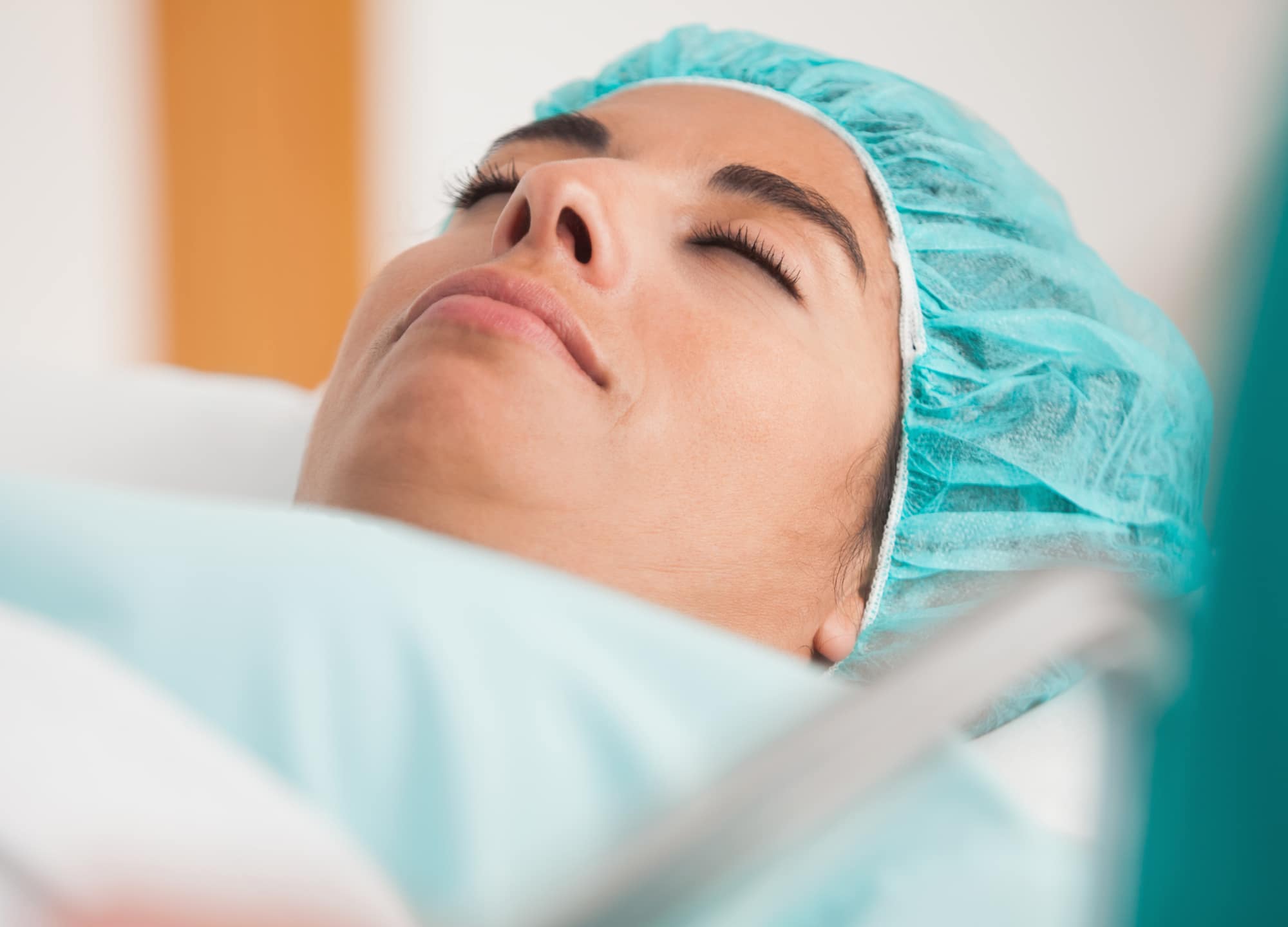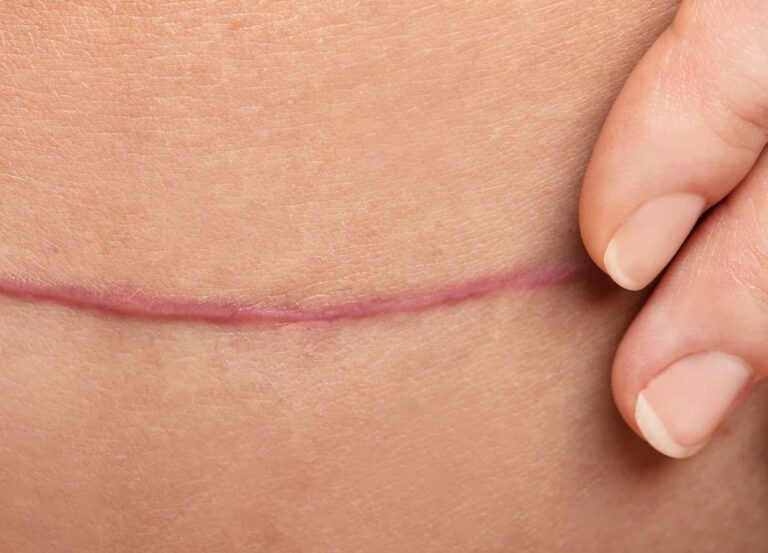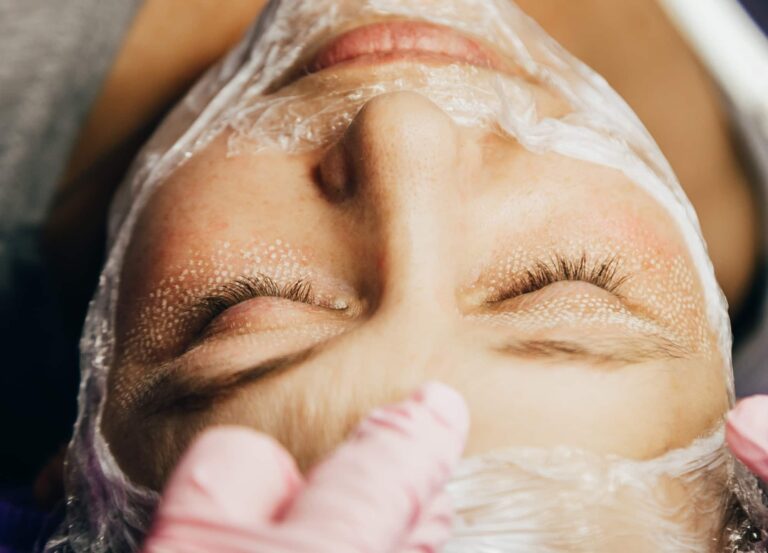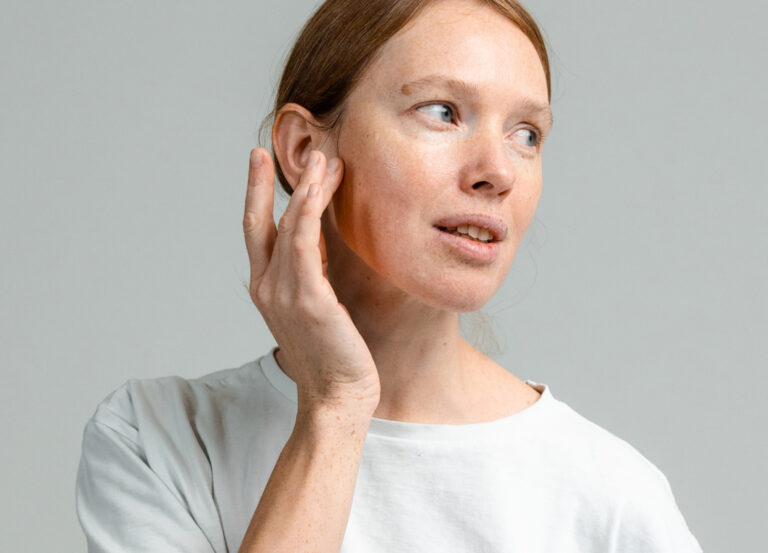The empowering outcomes of plastic surgery inspire millions to book cosmetic procedures every year. However, the fear of a potentially painful recovery can be a nonstarter for many others. The good news is that with careful planning (and the medical guidance of a skilled provider), significant discomfort can be largely avoided.
One of the most effective ways to achieve a more comfortable recovery period is by scheduling a consultation with a skilled provider who is passionate about providing ERAS (enhanced recovery after surgery) care. “Most surgeons these days have a protocol—it’s not just what you do after surgery, it’s what you do before surgery and during surgery that is key to optimizing pain control in patients,” explains Dr. Quintessa Miller, a board-certified plastic surgeon in Destin, Florida. As with many of the providers we spoke to, using EXPAREL (bupivacaine liposome injectable suspension) is critical to her pain-controlling protocol.
EXPAREL is a long-lasting, non-opioid medication that is administered during surgery and can provide pain relief for up to 72 hours after surgery—the hours that tend to be the most painful for patients. “In my observation, if you can reduce immediate postoperative pain in the first day or two, it’s sort of like a reset,” says Dr. Mark Epstein, a board-certified plastic surgeon in Hauppauge, New York. “When the pain medicine wears off, [patients are] at a lower level of pain than they would be without that medication.” It’s why he swears by EXPAREL for labiaplasty patients, who often face the most painful recovery. “Labiaplasty patients treated with EXPAREL experience less pain for the first couple of days, and then, when it wears off, they take nothing more than Tylenol or Advil,” he says.
EXPAREL as part of ERAS protocol can greatly alleviate post-procedure discomfort. So if you’re reluctant to undergo plastic surgery due to concerns about pain (or taking opiates to relieve it), read on as board-certified plastic surgeons break down some of the best tips and tricks to stay comfortable after surgery.
Ask your doctor if they use EXPAREL; this step during surgery can make all the difference
“We first used EXPAREL for an abdominoplasty, and I hadn’t told the recovery-room nurse. She immediately said, ‘What’s different here? This patient has very little discomfort.’ I’d just ordered $4,000 worth of pain pumps, which I ended up pitching because I couldn’t justify using them up when I had something so much better in EXPAREL. It results in less pain, less use of narcotics, earlier ambulation, and an overall quicker recovery.” —Dr. Epstein
“We have a combination of things we do for our surgical patients—they all work together as a team. For example, for tummy tucks or abdominal liposuction, I find that using ultrasound-guided nerve blocks works very well. That makes patients dramatically more comfortable for the first few days after surgery. These nerve blocks can be done with EXPAREL for an extended-duration effect. Using a well-studied combination of medications that work together nicely has been a step forward. We can avoid a lot of the older narcotic medications—which are prone to causing nausea, vomiting and other gastrointestinal issues—while still getting good control of the pain and inflammation from the surgery.” —Dr. Thomas Fiala, a board-certified plastic surgeon in Altamonte Springs, Florida
“Pain control in the operating room with good pain control upon waking up is so important. I am a big believer in EXPAREL blocks of both the muscles in the area being operated on and the surrounding soft tissue. I’ve found patients are much more comfortable when I utilize this medication in the operating room. If you leave surgery comfortable, it’s easier to keep you that way during recovery. Thus, having an anesthesiologist skilled with outpatient anesthesia is key.” —Dr. Kelly Killeen, a board-certified plastic surgeon in Beverly Hills, California
“I found that before I used EXPAREL, [when I was] just prescribing narcotics, so many patients [would be] nauseous. If you get vomiting after abdominoplasty, that is a disaster—it really increases pain. Then, when they have a 10 out of 10 level of pain and they’re not at a hospital, where there are IV pain medications, it’s really hard to make that pain manageable again. Narcotics also cause constipation.” —Dr. Miller
Make sure you have the right meds, meals, and compression garments on hand
“Taking Motrin around the clock for the first several days is very helpful. [Also,] many patients feel that CBD products, both oral and topical, are helpful with minimizing pain and inflammation following surgery.” —Dr. Killeen
“After anesthesia, I do everything I can to try to prevent nausea. Many times, I have patients wear a scopolamine patch. A lot of people use it for seasickness. I have them put that on before surgery because it has to be in your system beforehand. So normally, I have them put the patch behind their ear the night before surgery.” —Dr. Miller
“I have people in compression garments after surgery, such as a sports bra after breast procedures. I do this to help reduce swelling as well as provide added support to the core and the area that’s just been operated on. It takes a lot of the achiness out of recovery—if your breasts are just hanging freely and they have fresh incisions, that’s going to hurt a little more.” —Dr. John Paul Tutela, a board-certified plastic surgeon in Livingston, New Jersey
“When juicing was very popular, patients were not getting any protein, which is not good for wound healing. Now I make it a point to tell patients, ‘This is not the time to be juicing, this is when you need protein.’ After abdominal surgery, sometimes it’s hard to eat—you have a bit of loss of appetite. I say to drink at least three to four protein shakes a day. Whatever flavor you’d like. I tell patients to maybe eat fish or chicken and to stay away from steaks in the beginning because they can be hard to digest. Of course, [I also recommend] multivitamins and I encourage them to eat vegetables. Nothing greasy.” —Dr. Miller
Consider hot and/or cold therapy, but proceed with caution
“Ice is always good at relieving pain and discomfort. The cold numbs the nerve feelings but also reduces inflammation. Patients need to be careful with ice, as prolonged use can lead to frostbite. Certainly do not [treat yourself] for more than 20 minutes at a time. If the areas are numb, I recommend not using ice or heat, as you can inadvertently cause tissue damage.” —Dr. David Shafer, a board certified plastic surgeon in New York City
“Personally, I don’t like ice or heat—often, body parts that have been operated on can be numb or have altered sensation. You could cause frostbite and a full-thickness skin necrosis from too much cold or similarly damage skin from heat. I keep things simple and tell patients not to use either. If 9 out of 10 people are not a problem but that one person is a disaster, that’s a real problem.” —Dr. Tutela
Move your body
“We like our patients to eat, drink, and walk as soon as possible. For our breast augmentation patients, we want their arms over their heads right after surgery—before they leave the recovery room. That reduces muscle spasm by getting the muscles moving.” —Dr. Epstein
“One seemingly trivial thing that really helps a lot for postoperative pain management is having my breast augmentation patients do shoulder rolls. I have them shrug their shoulders and go back, down, forward, up, back, down. It helps keep everything loose, which I find to be important for [helping to prevent] spasms. When some people are in pain, they want to be still. That’s not a great idea because that adds stiffness into the equation, everything. You want to be moving around a lot.” —Dr. Tutela
Meditate and massage
“I’m really big on meditation. People meditate in different ways, but what I like to do is listen to music that puts me in a happy space. I love yacht rock, and a lot of my patients love that too—it actually puts most patients in a calm mood. Playing music that calms your mind while you’re walking with headphones so you don’t think about whatever discomfort you may be in just puts you in a happy place.” —Dr. Miller
“Massage—more specifically, lymphatic massage—is excellent at mobilizing fluids, stimulating blood flow and reducing inflammation, which promotes healing and reduces discomfort and pain. There are lymphatic zones, and depending on the area of the body, kneading and circular motions moving the fluid and swelling toward these zones is useful. Moderate pressure is good, similar to a relaxing massage. In trouble areas, after a few sessions, a deeper tissue pressure may be useful. [While] the simplest way to do this yourself for the face is to go to YouTube, it may be better to hire a lymphatic masseuse for body applications.
“Vibration is also good, such as a face vibrator or massage vibrator. It helps distract nerves and interrupt any pain nerve signals to the brain. It can be used over the areas of discomfort, but a patient should certainly discuss with their surgeon before using. I would not recommend over open wounds, numb areas, or infected wounds, but vibration for a few minutes several times a day can be helpful. It’s important to do everything in moderation so as not to traumatize the area. [On a similar note,] orgasms can certainly be a good distraction and overall pain reliever.” —Dr. Shafer
For more information, please visit EXPAREL.com/safety.
This article is sponsored by Pacira BioSciences, Inc.
*Dr. Miller is a consultant of Pacira BioSciences, Inc.
Indication
EXPAREL® (bupivacaine liposome injectable suspension) is indicated for single-dose infiltration in patients ages 6 years and older to produce postsurgical local analgesia and in adults as an interscalene brachial plexus nerve block to produce postsurgical regional analgesia. Safety and efficacy have not been established in other nerve blocks.
Important Safety Information
EXPAREL should not be used in obstetrical paracervical block anesthesia.
In studies in adults where EXPAREL was injected into a wound, the most common side effects were nausea, constipation, and vomiting.
In studies in adults where EXPAREL was injected near a nerve, the most common side effects were nausea, fever, and constipation.
In the study where EXPAREL was given to children, the most common side effects were nausea, vomiting, constipation, low blood pressure, low number of red blood cells, muscle twitching, blurred vision, itching, and rapid heartbeat.
EXPAREL can cause a temporary loss of feeling and/or loss of muscle movement. How much and how long the loss of feeling and/or muscle movement occurs depends on where and how much of EXPAREL was injected and may last for up to five days.
EXPAREL is not recommended to be used in patients younger than 6 years old for injection into the wound, for patients younger than 18 years old for injection near a nerve, and/or in pregnant women.
Tell your health care provider if you have or your child has liver disease, since this may affect how the active ingredient (bupivacaine) in EXPAREL is eliminated from the body.
EXPAREL should not be injected into the spine, joints, or veins.
The active ingredient in EXPAREL can affect the nervous system and the cardiovascular system; may cause an allergic reaction; may cause damage if injected into the joints; and can cause a rare blood disorder.
FOR MORE INFORMATION, PLEASE VISIT EXPAREL.com or CALL 1-855-793-9727. You are encouraged to report negative side effects of prescription drugs to the FDA. Visit fda.gov/medwatch or call 1-800-FDA-1088.
PP-EX-US-8115 11/22











